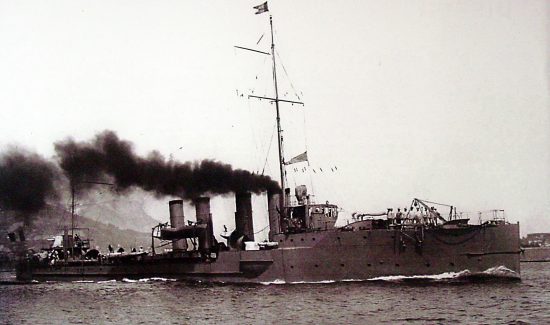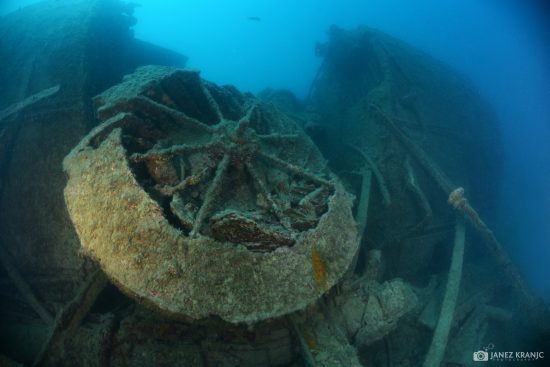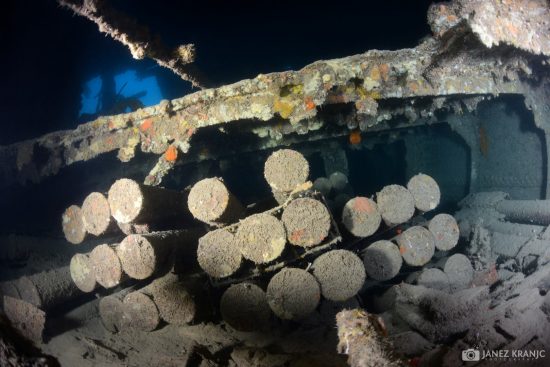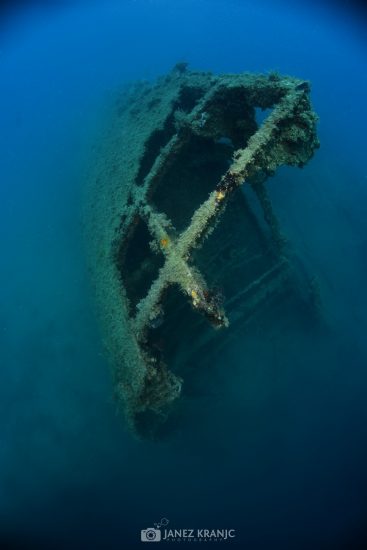





On the cold night of February 24th 1915, French destroyer Dague was anchored outside the port of Bar, assigned to protect merchant ships in the area.
Increasing northeasterly winds made this modern battleship drag its two massive anchors. The ship was moving slowly. At one point it struck an underwater mine laid by the Austro-Hungarians before they had withdrawn from the area. A powerful explosion followed by a fire took the ship to the bottom of the bay very fast along with 39 of the crew. The high number of casualties was also due to the fact that most of the crew was already asleep in their quarters.
Dague lay at the bottom of the sea until 1971 when the construction of the new port of Bar begun. The wreck, being in the way of the construction of the new jetty, had to be removed. It was cut up, and some parts were salvaged, but some were displaced due to the fact that they contained large caches of ammunition. The remains of the sailors discovered during the salvage operation were handed over to the French embassy and subsequently taken to France for burial, although many remains were left in parts of the wreck which were displaced some 500m away.
Due to the fact that the wreck was now resting at a depth of only 18m, it was frequently visited by local divers collecting artifacts. This resulted in the creation of many private collections. Prior to the centennial commemoration of the sinking in 2015, largely thanks to the efforts of the local archeologist Mladen Zagarcanin, most of the recovered items were handed over to the National Heritage Museum in Bar and a permanent exhibition was created in the museum. Thanks to this collaboration, we can find out more about Dague, its crew and their lives prior to their demise.
Dague was built in 1908 in the Lorienne shipyard. With its 3 powerful steam engines, it was capable of a maximum speed of 30 knots. Its displacement was 731 tons. Part of its arsenal included 4 torpedo tubes and two 37mm cannons.
The 3 parts of the wreck that remain today are in close proximity to each other. You can clearly recognize the officer’s quarters, the engine compartment and the ammunition storage. Crates of cannon ammunition are visible across the wreckage. Powder sticks recovered from damaged shells are still active and burn when lit at the surface. It is possible to dive through parts of the officer’s quarters, and you can see a brass bed in one cabin, the remains of the toilet and crates of grenades sacked under the floor.
Visibility is mostly good and when it is exceptionally good you can clearly see the wreck from the surface. Diving at this location is possible through the local dive center Scuba Quest in Bar.
During WWI, on several occasions, Dague brought relief supplies to the local population. In an effort to remember and express their gratitude, the people of Bar placed a commemorative plate in the pedestrian zone near the entrance to the Bar marina. This way they hope that the noble effort and the ultimate sacrifice of the French sailors will never be forgotten.
Text & Photos: Janez Kranjc
Archives: “Barski zavicajni muzej”
 Ivana and Janez
Ivana and Janez 23rd May 2018
23rd May 2018 Bar, Montenegro
Bar, Montenegro